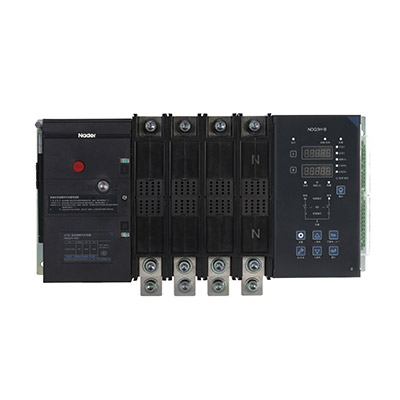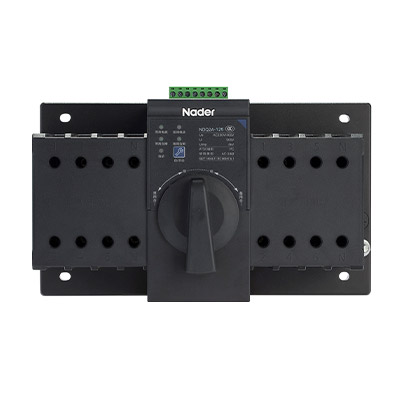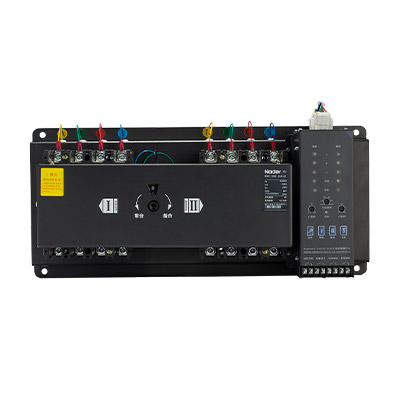NDQ Series Automatic Transfer Switching Equipment
Updated:August 12,2022 16:04PM
Nader NDQ1 series (63A-800A) ATS (CB level) is applicable to AC rated working voltage of 63A~225A shell frame 400V and below 400-800 shell frame 415V below, automatic conversion between two power supplies in the emergency power supply system with rated frequency of 50Hz and rated current of 16A to 800A to ensure continuous, safe and reliable operation of important loads (such as fire load). It is widely used in hospitals, shopping malls, banks, chemical industry, high-rise buildings, military facilities, fire fighting and other important places where power failure is not allowed.
2021 Quick Selection Guide »
Features
Features of NDQ Series
- CB-gradeproducts adopt our molded case and miniature circuit breakers as actuators with a high breaking capacity.
- PC-gradeproducts adopt our variant disconnecting switches of the miniature circuit breaker as actuators with simple but reliable structure.
- Using the PIC single chip as the control core, the intelligent controller is powerful and easy to expand with the strong anti-interference ability.
- Reliable mechanical interlocking device and electric interlocking protection are provided between mechanisms so as to prevent the occurrence of simultaneous closing.
FAQs
Questions & Answers for NDQ Series
-
What are the two types of automatic transfer switches?There are two basic types of automatic transfer switches, circuit breaker and contactor. The circuit breaker type has two interlocked circuit breakers, so only one breaker can be closed at any anytime. The contactor type is a simpler design that is electrically operated and mechanically held.
-
How do automatic transfer switches work?How Does an Automatic Transfer Switch Work? An automatic transfer switch, or ATS switch, connects your standby generator to your home. ... When the transfer switch detects a power outage, it switches your home to generator power. Afterward, it detects when the power is restored and switches your home back to utility power.
-
What is Auto Transfer Switch?A transfer switch is an electrical switch that switches a load between two sources. ... An Automatic Transfer Switch (ATS) is often installed where a backup generator is located, so that the generator may provide temporary electrical power if the utility source fails.
-
Do I need a permit to install a generator transfer switch?Technically yes, you need a permit from the local authorities whenever you install any permanent additions to your house. Generator transfer switches are no exception. However, if you hire a certified electrician for the installation, they will usually be able to sort out the permits on your behalf.
-
Which is better transfer switch or interlock?Interlock switches are usually less sophisticated and therefore less expensive than automatic transfer switches. They require training and an understanding of the building's electrical system for safe use.
-
Can you run a generator without a transfer switch?It's not only less safe to run a generator without a transfer switch, but you'll limit the devices that your generator can power,” says Dave Trezza, who oversees generator testing for Consumer Reports.






